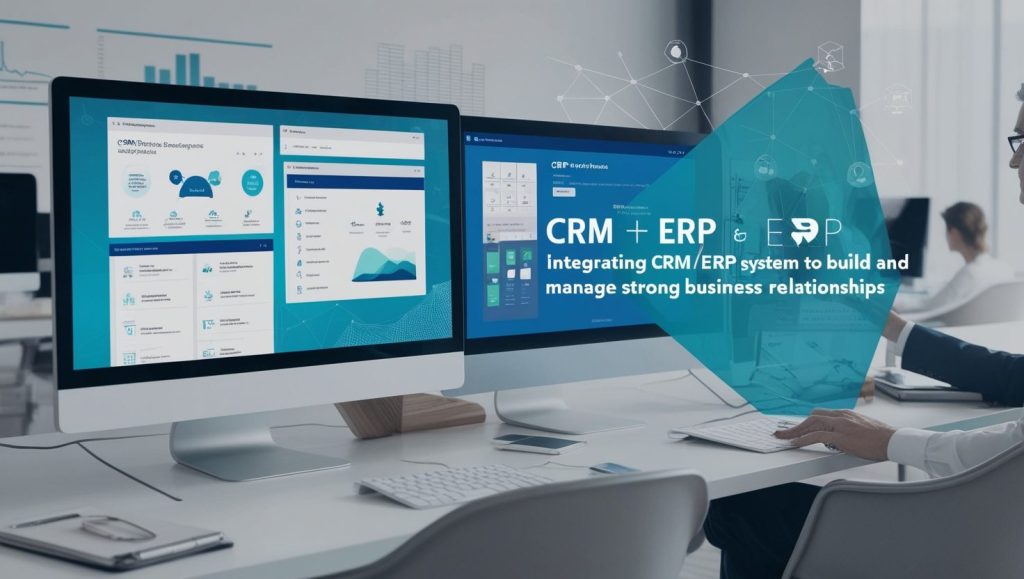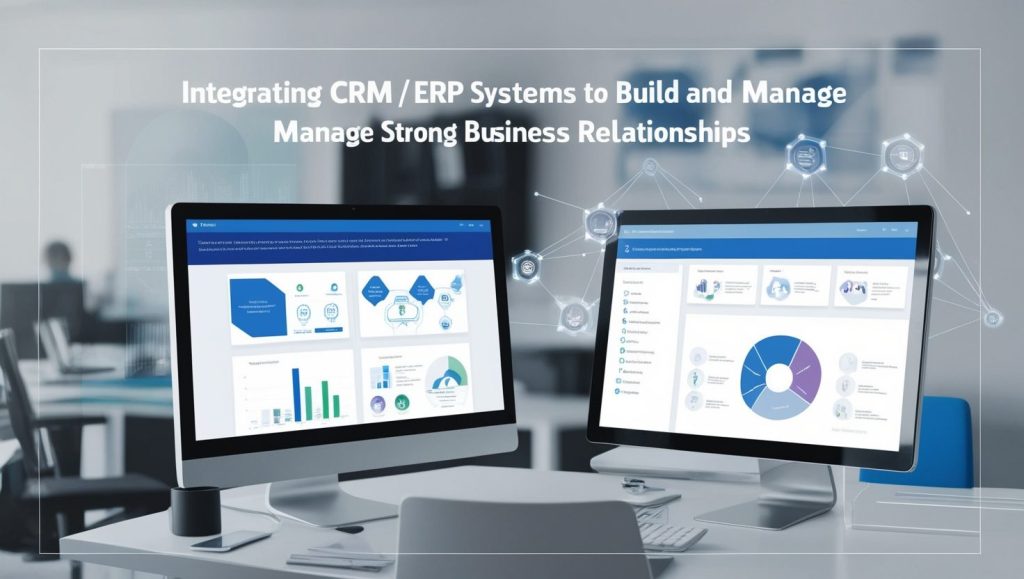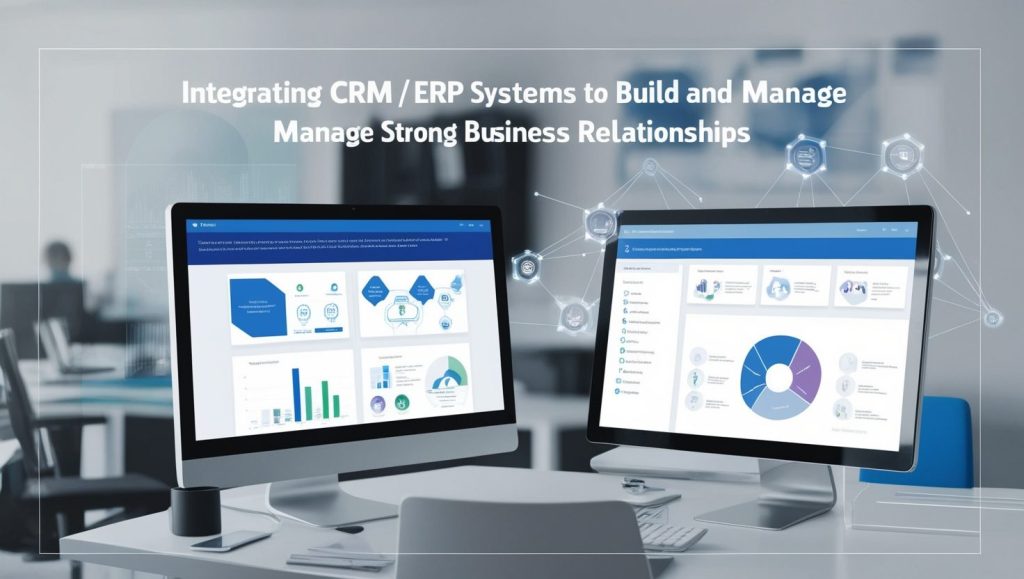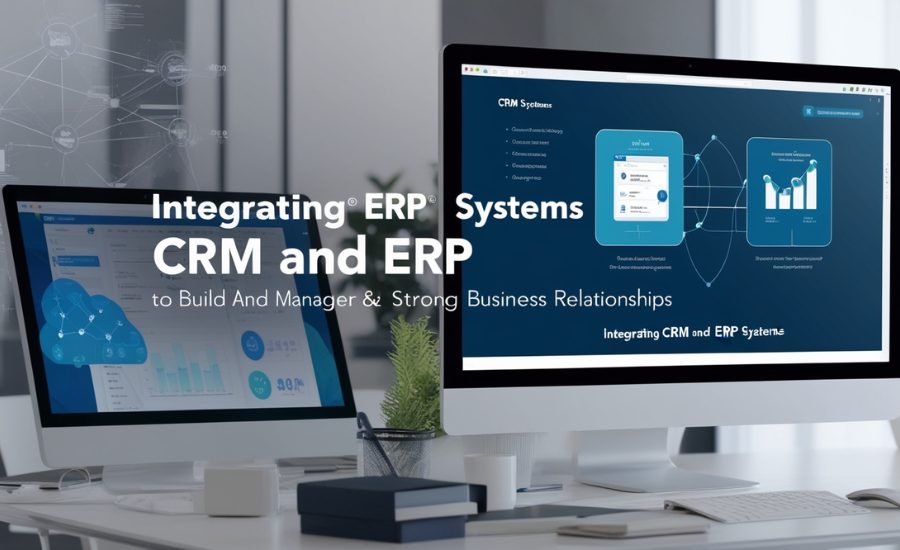Https://NoticViralWeb.BlogSpot.com/2024/04/crm.html & Many More
Introduction
In our speedy world, the capacity to construct solid connections has never been more significant. Whether in unique interactions or expert organizations, significant connections can prompt more prominent satisfaction and achievement. Have you at any point saw how certain individuals appear to easily make affinity while others battle? Frequently, the distinction lies in their methodology and the apparatuses they use. In this article we’ll read about Https://NoticViralWeb.BlogSpot.com/2024/04/crm.html.
Perhaps the best way associations improve their associations with clients is through Client Relationship The board (CRM) frameworks. These amazing assets smooth out correspondence and assist with fitting associations to address individual issues. As organizations make progress toward development, dominating CRM is fundamental for supporting enduring associations.
Likewise, Undertaking Asset Arranging (ERP) frameworks assume a vital part in coordinating and overseeing center business processes, guaranteeing proficient tasks and informed navigation. By investigating how CRM and ERP frameworks can change relationship-building systems, we can find better approaches to reinforce both individual and expert ties. Go along with us as we dig into the highlights of building more grounded connections and perceive how these frameworks can alter your way to deal with interfacing with others.
Understanding CRM and Its Role in Building Connections

Client Relationship The executives (CRM) is something beyond an instrument — it’s an all encompassing technique for developing significant associations. At its heart, CRM empowers organizations to acquire a significant comprehension of their clients, which is fundamental for building more grounded connections.
By gathering and investigating information, CRM frameworks permit organizations to redo their collaborations in light of individual inclinations and requirements. A very much executed CRM unifies client data into a solitary, open store, making it more straightforward for groups across the association to team up.
This bound together methodology encourages collaboration between deals, promoting, and supporting divisions. By sharing bits of knowledge about client ways of behaving and inclinations, these groups can pursue more educated choices and convey in a more customized way.
Furthermore, CRM frameworks guarantee convenient subsequent meet-ups and customized associations. At the point when organizations recollect past collaborations and inclinations, clients feel esteemed and appreciated, which develops the relationship.
In the present cutthroat climate, really utilizing CRM upgrades business activities as well as fortifies associations with clients and partners. Building these connections is significant for supported accomplishment across any industry.
Benefits of Using CRM for Businesses
Executing a CRM framework offers a scope of advantages that can change how organizations draw in with their clients. This is how it’s done:
Increased Customer Retention
CRM frameworks assume an essential part in helping client maintenance. By checking client inclinations and ways of behaving, organizations can adjust their administrations to address evolving issues. This customized approach cultivates more prominent devotion and results in higher standards for dependability.
Improved Communication
CRM frameworks incorporate critical client information, making it promptly available to all colleagues. This smoothed out access advances better coordinated effort and quicker goal of client issues. At the point when groups impart actually and share data flawlessly, it converts into further developed client care.
Personalized Interactions
In the present market, standing apart means offering customized encounters. CRM frameworks assemble bits of knowledge into clients’ purchasing propensities and inclinations, empowering organizations to make designated advertising efforts. At the point when clients feel comprehended and esteemed through custom fitted connections, their fulfillment and devotion will more often than not take off.
By utilizing these benefits, organizations can make more grounded, more significant associations with their clients.
How to Implement CRM for Your Business
Executing a CRM framework includes a few fundamental stages to guarantee it conveys the ideal outcomes. Here is a functional manual for kick you off:
Choosing the Right Software
The initial step is choosing a CRM programming that accommodates your business needs. Choices like Salesforce, HubSpot, and Zoho each proposition various highlights custom fitted to different prerequisites. Find an opportunity to survey which CRM framework adjusts best to your association’s objectives and necessities.
Training Employees
Whenever you’ve picked a CRM framework, it is basic to prepare your group. Coordinate studios or instructional meetings to assist everybody with becoming OK with the new programming. Energize open correspondence during these meetings so colleagues can get clarification on pressing issues and offer their encounters. Successful preparation guarantees that everybody can utilize the CRM framework to its fullest potential.
Setting Clear Goals
Lay out clear targets for your CRM execution. Whether your attention is on further developing client maintenance, upgrading correspondence, or refining information investigation, it is urgent to have quantifiable objectives. Routinely audit your advancement towards these objectives and change your procedures on a case by case basis to remain focused.
Ongoing Evaluation
Consistently assess the CRM framework’s presentation to guarantee it meets your targets. Ordinary appraisals assist with keeping the framework lined up with your objectives and keep up with group inspiration all through the execution cycle.
By following these means, you can effectively carry out a CRM framework that upgrades your client collaborations and supports your business objectives.
Case Studies/Examples of Successful Use of CRM in Different Industries

An incredible illustration of effective CRM execution comes from the retail business. A notable dress brand embraced a CRM framework to follow client inclinations and buy history. This permitted them to send custom-made advancements, bringing about a remarkable expansion in client devotion and deals.
In the medical care area, a main emergency clinic utilized CRM to all the more likely oversee patient connections. Via computerizing arrangement updates and subsequent meet-ups, they worked on understanding fulfillment and decreased flake-out rates.
The tech business has additionally seen great outcomes with CRM. A product organization incorporated their emotionally supportive network with CRM devices, which further developed following client issues. This combination smoothed out correspondence, prompting quicker goal times and higher consumer loyalty.
These models delineate how different ventures influence CRM frameworks to improve client connections, drive development, and lift productivity.
Tips for Building Stronger Personal Connections
Building solid unique interactions relies on viable correspondence and undivided attention. Here are a few reasonable tips to improve your connections:
Effective Communication
Participate in discussions with certified interest by keeping in touch and if you’re completely present to show that. These straightforward signals can convey certainty and mindfulness. Posing unconditional inquiries can support further discourse, prompting more significant collaborations.
Active Listening
Undivided attention is critical to building trust and affinity. Show that you’re locked in by gesturing periodically and utilizing verbal certifications like “I see” or “That is fascinating.” These signs exhibit your consideration. Try to try not to hinder and give the other individual the space to totally share their contemplations.
Nonverbal Communication
Focus on your nonverbal signs. Your non-verbal communication ought to reflect your commitment. Incline in somewhat or utilize normal hand motions, however be mindful so as not to get carried away. Positive nonverbal correspondence can fundamentally upgrade the nature of your connections.
Tips for Building Stronger Personal Connections Through Effective Communication and Active Listening
Building significant associations begins with successful correspondence. Visually connect and show certifiable interest in the other individual. This basic demonstration conveys certainty and mindfulness. Pose unassuming inquiries to empower further discussions, considering more significant trades past yes or no responses.
Undivided attention is similarly significant. Gesture at times and utilize verbal signals like “I see” or “That is fascinating” to show you’re locked in. Abstain from interfering; all things considered, give the other individual the space to completely offer their viewpoints before you answer. This regard helps assemble trust and cultivates open correspondence.
Additionally, focus on nonverbal signals. Your non-verbal communication ought to mirror your commitment — incline in somewhat or utilize regular hand signals that vibe agreeable for you, yet keep away from whatever could occupy. Positive nonverbal correspondence can enormously improve the nature of your connections.
Understanding ERP Systems: An Overview
ERP frameworks are programming stages intended to bring together and oversee center business processes across an association. By coordinating capabilities like money, HR, assembling, and store network the executives, ERP frameworks dispose of information storehouses and make a solitary wellspring of truth. This reconciliation works with ongoing information sharing and improves dynamic cycles, prompting more productive and informed activities.
The Core Functions of ERP Systems
ERP frameworks are incredible assets that assist with smoothing out different parts of business tasks:
Finance The executives
ERP frameworks work on monetary undertakings like bookkeeping, planning, and monetary detailing. They guarantee consistency and precision in monetary records, making it simpler to oversee spending plans and meet administrative prerequisites.
HRWith HR modules, ERP frameworks handle worker information, finance, enlistment, and execution assessments. This robotization helps in dealing with the labor force all the more really, from onboarding to execution following.
Producing
ERP frameworks improve fabricating processes by overseeing creation arranging, stock control, and quality confirmation. They guarantee that creation chugs along as expected and effectively, decreasing waste and further developing item quality.
Inventory network The board
ERP frameworks incorporate strategies, acquirement, and provide the executives. This joining smoothes out store network tasks, guaranteeing convenient conveyances and effective stock administration.
By tending to these areas, ERP frameworks empower organizations to work more strongly and go with additional educated choices.
Key Considerations for ERP Implementation
Effectively carrying out an ERP framework requires cautious preparation and execution. Here are a few vital techniques to guarantee a smooth progress:
Far reaching Needs Evaluation:
Start with an exhaustive evaluation of your association’s necessities. Distinguish the key cycles that require coordination and the particular functionalities you want. This examination will direct you in choosing an ERP arrangement that lines up with your business objectives.
Choosing the Right ERP Arrangement
It is urgent to Choose the right ERP arrangement. Consider factors like adaptability, usability, and the merchant’s standing. Choose cloud-put together or with respect to premises arrangements in view of your business’ novel requirements and existing foundation.
Information Relocation and Coordination:
Information relocation is a basic move toward ERP execution. Guarantee that all current information is precisely moved to the new framework. Consistent reconciliation with current frameworks is fundamental to stay away from information irregularities and functional interruptions.
Preparing and Change The executives:
The progress of an ERP framework frequently relies on client reception. Put resources into exhaustive preparation projects to assist representatives with becoming alright with the new framework. Execute change the executives procedures to help staff as they adjust to new cycles and work processes.
Implementing Https://noticviralweb.blogspot.com/2024/04/crm.Html

1. Picking the Right CRM Programming
The underlying move toward carrying out a CRM framework is choosing the product that best lines up with your business needs. Famous choices like Salesforce, HubSpot, and Zoho each proposition exceptional elements customized to various prerequisites. Find opportunity to figure out the qualities of every stage and assess how they fit with your association’s particular necessities and objectives.
2. Preparing Workers
Whenever you’ve chosen your CRM framework, compelling preparation is vital for fruitful execution. Arrange studios or active instructional courses to assist your group with getting comfortable with the new programming. Incorporate intuitive components, for example, interactive discussions to resolve any different kinds of feedback. This approach guarantees that your group can explore the CRM framework certainly and stay away from possible difficulties.
3. Laying out Clear Objectives
Laying out clear goals for your CRM execution is fundamental. Decide the basic role of the CRM, whether it’s to upgrade client maintenance, further develop correspondence, or smooth out information the executives. Put forth quantifiable objectives that you can follow over the long run. Routinely evaluate the CRM’s exhibition against these objectives and change your systems depending on the situation. This continuous assessment helps keep the group adjusted and guarantees the CRM framework really upholds your business targets.
.Emerging Trends in ERP Systems
The ERP scene is continually developing, with new innovations upgrading their capacities:
Cloud-Based ERP ArrangementsCloud-based ERP frameworks give more noteworthy adaptability and openness contrasted with customary on-premises arrangements. They permit associations to get to their information from anyplace, working with remote work and constant bits of knowledge. Moreover, cloud arrangements frequently accompany lower forthright expenses and simpler versatility, settling on them a well known decision for current organizations.
Reconciliation of man-made intelligence and AI:Computerized reasoning (artificial intelligence) and AI (ML) are progressively being coordinated into ERP frameworks. These advancements empower prescient examination, robotize routine undertakings, and proposition keen bits of knowledge, assisting organizations with smoothing out activities and expect future patterns.
Center around Client ExperienceCurrent ERP frameworks are putting a more grounded accentuation on client experience. With instinctive points of interaction and easy to use plans, these frameworks mean to further develop client reception and make it simpler for representatives to effectively explore and play out their undertakings.
Active Listening
Avoid Interrupting
Give the other individual the space to share their considerations totally before you answer. This exhibits regard and encourages a more transparent discussion.
Be Mindful of Nonverbal Signals:
Your non-verbal communication ought to flag that you’re locked in. Incline marginally and utilize regular hand signals to show that you’re focusing.
By zeroing in on these components of correspondence and undivided attention, you can fabricate trust and fortify your associations, making connections more significant and enhancing.
Facts
- CRM Systems:
- Purpose: Enhance customer relationships by personalizing interactions and improving communication.
- Benefits: Increases customer retention, improves communication, and allows for personalized interactions based on customer data.
- Implementation Steps: Choose appropriate software, train employees, set clear goals, and continuously evaluate performance.
- Examples: Retail brands use CRM to increase customer loyalty, healthcare providers improve patient satisfaction, and tech companies enhance customer support.
- ERP Systems:
- Purpose: Integrate and manage core business processes to eliminate data silos and streamline operations.
- Core Functions: Finance management, HR, manufacturing, and supply chain management.
- Implementation Strategies: Conduct a needs assessment, choose the right solution, ensure accurate data migration, and focus on training and change management.
- Emerging Trends: Cloud-based solutions offer flexibility and remote access, AI and ML integration provide predictive analytics and automation, and improved user experience focuses on intuitive design and ease of use.
Summary
In today’s fast-paced world, building strong connections is crucial for personal satisfaction and professional success. Effective tools like Customer Relationship Management (CRM) and Enterprise Resource Planning (ERP) systems are vital in fostering and managing these connections. CRM systems help businesses understand and engage with their customers through personalized interactions and streamlined communication. ERP systems integrate core business processes like finance, HR, manufacturing, and supply chain management, enhancing operational efficiency and decision-making.
FAQs
1. What is CRM and how does it help businesses?
- CRM (Customer Relationship Management) is a system that helps businesses manage and analyze customer interactions and data throughout the customer lifecycle. It enhances relationships by personalizing interactions, improving communication, and increasing customer retention.
2. How can CRM systems improve customer retention?
- CRM systems track customer preferences and behaviors, allowing businesses to tailor their services and communications to individual needs, which fosters loyalty and increases retention rates.
3. What are the benefits of using ERP systems?
- ERP systems streamline various business processes, including finance, HR, manufacturing, and supply chain management. They enhance operational efficiency, improve decision-making, and integrate data across the organization.
4. What should be considered when choosing an ERP system?
- When selecting an ERP system, consider factors such as flexibility, ease of use, the vendor’s reputation, and whether a cloud-based or on-premises solution is more suitable for your business needs.
5. How can businesses ensure a successful ERP implementation?
- To ensure successful ERP implementation, businesses should perform a comprehensive needs assessment, choose the right ERP solution, manage data migration effectively, and invest in thorough training and change management.
6. What are some emerging trends in ERP systems?
- Emerging trends include the adoption of cloud-based ERP solutions for greater flexibility, the integration of AI and machine learning for predictive analytics and automation, and a stronger focus on user experience with intuitive interfaces.
For more Information About Anything visit trendaddictor.com







